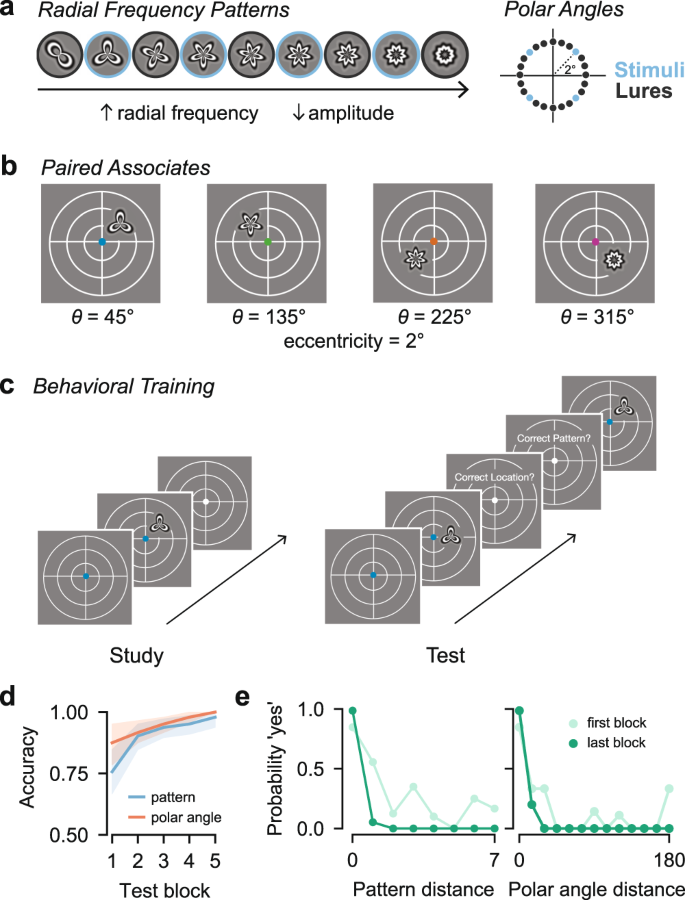見たものを記憶するときと、初めて見るものとでは、脳の働きが根本的に違うのです。 The brain works in fundamentally different ways when remembering what we have seen compared to seeing something for the first time.
2022-10-18 ニューヨーク大学 (NYU)
研究チームは、ヒトを対象とした一連の実験を行った。研究チームは、機能的MRI(fMRI)技術を用いて、被験者が画像(コンピューター画面上のさまざまな場所にある単純な幾何学図形)を見ているときと、その後、その画像を思い出してもらうときの視覚野の反応を測定した。実験では、幾何学的な図形の配置を変えることで、視覚系における記憶活動を高精度にモニターし、理解することができた。
その結果、図形を最初に処理するときの神経活動と、図形を思い出してもらうときの神経活動には、いくつかの共通点があることがわかった。つまり、何かを初めて見たときに展開される視覚野の部分(知覚)は、記憶処理中にも活動していたのだ。
研究チームは、小さな物体を見る知覚の際に、一次視覚野の小さな部分、二次視覚野の大きな部分、さらに高次皮質の大きな部分が活性化することを明らかにした。しかし、視覚刺激を思い出すとき(=記憶)には、この進行が失われているように見えることを発見した。
<関連情報>
- https://www.nyu.edu/about/news-publications/news/2022/october/haven-t-i-seen-this-before–study-offers-new-insights-into-how-t.html
- https://www.nature.com/articles/s41467-022-33161-8
ヒト視覚野における知覚と記憶の異なる空間同調特性 Perception and memory have distinct spatial tuning properties in human visual cortex
Serra E. Favila,Brice A. Kuhl & Jonathan Winawer
Nature Communications Published:18 October 2022
DOI:https://doi.org/10.1038/s41467-022-33161-8

Abstract
Reactivation of earlier perceptual activity is thought to underlie long-term memory recall. Despite evidence for this view, it is unclear whether mnemonic activity exhibits the same tuning properties as feedforward perceptual activity. Here, we leverage population receptive field models to parameterize fMRI activity in human visual cortex during spatial memory retrieval. Though retinotopic organization is present during both perception and memory, large systematic differences in tuning are also evident. Whereas there is a three-fold decline in spatial precision from early to late visual areas during perception, this pattern is not observed during memory retrieval. This difference cannot be explained by reduced signal-to-noise or poor performance on memory trials. Instead, by simulating top-down activity in a network model of cortex, we demonstrate that this property is well explained by the hierarchical structure of the visual system. Together, modeling and empirical results suggest that computational constraints imposed by visual system architecture limit the fidelity of memory reactivation in sensory cortex.


